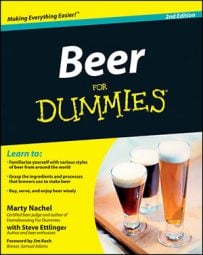Ironically, though well known for both its wonderful pub culture (the tales! the music!) and internationally successful brewers Guinness, Murphy, and Beamish, Ireland doesn’t have many breweries, museums, or festivals, but it does have plenty of pubs — wonderful pubs.
Dry Stout is the national brew, and the major brands display a range of dryness. However, don’t think you can’t find other tasty ales and lagers or that Ireland isn’t worth the trip, because you can and it is.
Brewing Guinness
When Arthur Guinness started his brewery in 1759, he could never have foreseen the results of his efforts. His beer, the venerable Guinness Stout, would become the national drink of Ireland (though some may argue in favor of Jameson’s Whiskey).
The Guinness Brewery celebrated its 250th anniversary in 2009. In addition to being the national drink of Ireland, Guinness is also brewed in more than 40 countries around the world. An estimated 10 million pints of Guinness Stout are consumed every day.
While Guinness may very well be good for you (according to a popular Guinness slogan, anyway), it’s not inherently better than the other Dry Stouts found on the Emerald Isle. Both Murphy’s (established in 1792) and Beamish (established in 1883) hail from County Cork and can accompany corned beef and cabbage equally well.
Irish Red Ales
Another style of beer is attributed to Ireland, though it’s actually fading in popularity. Red Ales, as they came to be known, are malt-driven brews that were typically deep copper in color. Ireland’s most famous exported brand — George Killian Lett — is credited with popularizing the wave of red beers in the United States back in the 1980s and 1990s.
The Coors Brewing Company acquired the rights to George Killian’s Ruby Ale and marketed it in the United States as Killian’s Red Ale — though that it was ever brewed by Coors as an ale is doubtful. Eventually, Coors simply shortened the name to Killian’s Red, and no one ever questioned its stylistic authenticity.
Two other national brands you’re likely to encounter in Ireland are Smithwicks (pronounced smitticks) Ale and Harp Lager. A subsidiary of Guinness produces Harp, which is one of the few domestically produced lagers.
Unfortunately, much of Ireland’s brewing heritage is giving way to the increasingly popular lagers, mostly big-name brands imported from Europe and America. Irish youth seem to care little for Guinness Stout and its stodgy ilk.
Visiting Irish breweries and pubs
Ireland is similar to England in its pub culture; in fact, Ireland’s pub culture may even be more deeply rooted. Before trekking beyond the Wicklow Mountains, be sure to linger a bit longer in Dublin and savor its beery delights.
A trip to Dublin (and frankly, a trip to Ireland) isn’t complete without a stop at the Guinness Brewery. Established in 1759, the Guinness St. James Gate Brewery produces the world’s finest Dry Stout. Check out the Guinness Museum for the history of brewing in Ireland, beer advertising, brewing equipment, cooper’s tools, and free samples of Guinness Stout.
Pub crawls are done with great flair in Dublin. With advice from the locals, you can improvise a traditional Irish music crawl; actors performing O’Casey, Beckett, Yeats, Joyce, Behand, and other Irish luminaries, with a little bit of local lore thrown in for good measure, lead the Literary Pub Crawl.

